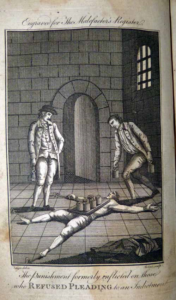George fidgeted in his chair while he waited for the jury to return to the courtroom. His lawyer claimed to be optimistic, but still George worried. If he was convicted, he was looking at a hard stint in prison. He crossed his fingers and prayed silently: Please, God, let them find me innocent.
Ah, poor George. He may or may not escape prison, but his prayer is not going to be answered.
A jury decision is called a verdict. The word comes from Latin by way of French, from roots meaning “true speech.” In the United States, criminal verdicts are most often determined by jury, although occasionally both sides waive the jury, in which case the judge determines the verdict instead (this is called a bench trial).
In our system, only two verdicts are possible.
- Guilty: This means the jury finds that the prosecutor proved every element of the crime beyond a reasonable doubt.
- Not guilty: This means the jury finds that the prosecutor failed to prove every element of the crime beyond a reasonable doubt.
That’s it. You’ll note that “innocent” is not an available verdict—ever.
A not-guilty verdict might indicate a number of things. For example, it might mean that the jury is fairly sure that the defendant did it, but they still possess some reasonable doubts. It might mean that the prosecutor proved almost everything but left out something key. Or it might mean that the jury truly believes the defendant is innocent. From a legal perspective, it doesn’t matter; in any of those cases, the result is the same. George is acquitted and goes home.
While the law doesn’t care about the difference between not guilty and innocent, George might. Records of his arrest and trial might still affect his life in various ways, even if he was ultimately acquitted. In some jurisdictions, he can file a factual innocence motion asking the court to enter a finding that he really is innocent. A hearing will be held, during which George (or his lawyer) can present evidence. If the judge finds in George’s favor, his arrest records will be sealed and eventually destroyed. Few defendants go this route, however.
Incidentally, once a not-guilty verdict has been entered, the defendant can never, ever be retried for that particular crime in that jurisdiction, no matter how much wonderful evidence shows up later on. That’s because of the double jeopardy clause, which I blogged about earlier.

